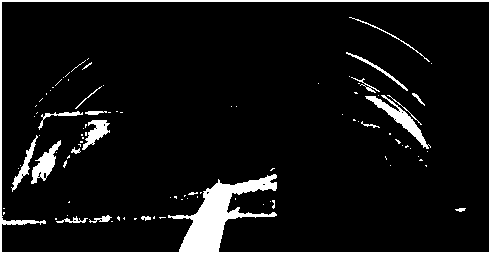Room-temperature cured nanometer self-cleaning antireflection coating solution and preparation method thereof
A nanometer self-cleaning, room temperature curing technology, applied in coatings and other directions, can solve the problems of low transmittance in the visible light region of nanoparticles, high curing temperature, long production process, etc., to achieve the effect of convenient use, low operating temperature and simple equipment
- Summary
- Abstract
- Description
- Claims
- Application Information
AI Technical Summary
Problems solved by technology
Method used
Image
Examples
Embodiment 1
[0017] Example 1: At room temperature, take 0.12 g TiO 2 Add 40 ml of deionized water and stir magnetically for 1 hour to obtain TiO 2 Dispersion; take 0.04 g SiO 2 Add 36 ml of ethanol and stir magnetically for 1 hour to obtain SiO 2 Dispersion: Take 0.1 ml of silane coupling agent and add it to 12 ml of absolute ethanol, then add 9.5 mg of antimony tin oxide and 9.5 mg of polyethylene glycol, and stir magnetically for 30 minutes to obtain antimony tin oxide dispersion. Mix the first two dispersions, add 1 mg polyethylene glycol (Mw=2000) and 0.1 ml silane coupling agent, stir for 1 hour, then add tin antimony oxide dispersion, and continue stirring for 30 minutes to obtain a transparent and stable A room temperature curing nano self-cleaning coating solution.
Embodiment 2
[0018] Example 2: At room temperature, take 0.06 g TiO 2 Add 22 ml of deionized water and stir magnetically for 1 hour to obtain TiO 2 Dispersion; take 0.02 g SiO 2 Add 18 ml of ethanol and stir magnetically for 1 hour to obtain SiO 2 Dispersion: Take 0.1 ml of silane coupling agent and add 12 ml of absolute ethanol, then add 6 mg of antimony tin oxide and 6 mg of polyethylene glycol, and stir for 30 minutes by magnetic force to obtain antimony tin oxide dispersion. Mix the first two dispersions, add 0.5 mg polyethylene glycol (Mw=2000) and 0.05 ml silane coupling agent, stir for 1 hour, then add tin antimony oxide dispersion, and continue stirring for 30 minutes to obtain a transparent and stable A room temperature curing nano self-cleaning coating solution.
Embodiment 3
[0019] Example 3: At room temperature, take 0.06 g TiO 2 Add 22 ml of deionized water and stir magnetically for 1 hour to obtain TiO 2 Dispersion; take 0.02 g SiO 2 Add 18 ml of ethanol and stir magnetically for 1 hour to obtain SiO 2 Dispersion: take 0.1ml of polysiloxane, add 6 ml of absolute ethanol, then add 4 mg of antimony tin oxide and 4 mg of polyethylene glycol, and stir for 30 minutes by magnetic force to obtain a dispersion of antimony tin oxide. Mix the first two dispersions, add 0.4 mg polyethylene glycol (Mw=2000) and 0.05 ml silane coupling agent, stir for 1 hour, then add tin antimony oxide dispersion, and continue stirring for 30 minutes to obtain a transparent and stable Room temperature curing nanometer self-cleaning coating fluid.
PUM
| Property | Measurement | Unit |
|---|---|---|
| particle diameter | aaaaa | aaaaa |
Abstract
Description
Claims
Application Information
 Login to View More
Login to View More - R&D
- Intellectual Property
- Life Sciences
- Materials
- Tech Scout
- Unparalleled Data Quality
- Higher Quality Content
- 60% Fewer Hallucinations
Browse by: Latest US Patents, China's latest patents, Technical Efficacy Thesaurus, Application Domain, Technology Topic, Popular Technical Reports.
© 2025 PatSnap. All rights reserved.Legal|Privacy policy|Modern Slavery Act Transparency Statement|Sitemap|About US| Contact US: help@patsnap.com


